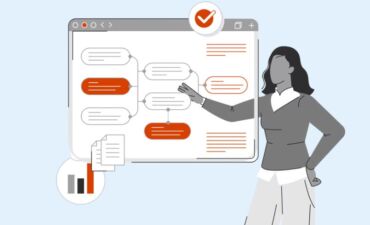COVID-19 has shaken up life around the globe, leaving many businesses in financial distress as they struggle to cover basic operating expenses, and CARES Act relief is meant to ease the pain with its temporary unwinding of certain TCJA reforms for business-liquidity purposes and other economic relief—all of which have broad implications for corporate governance that should be carefully considered by companies and their advisors as they navigate the terms of the stimulus.
On March 27, 2020, President Donald Trump signed into law the Coronavirus Aid, Relief, and Economic Security Act (CARES Act)—a $2.2 trillion stimulus package passed by Congress to provide economic relief in response to the novel coronavirus (COVID-19) pandemic being felt worldwide (CARES Act relief). Struggling companies, you may welcome this relief as you make every effort to preserve cash in the face of uncertainty and volatility—efforts that are complicated by the tax overhaul that followed passage of the Tax Cuts and Jobs Act (TCJA) in December 2017 (both Acts available on Thomson Reuters Checkpoint).
The conflict between our current coronavirus-plagued economic environment and TCJA tax reform is very noticeable as companies try feverishly to gain liquidity. The hallmark of the TCJA was the reduction in the US corporate income tax rate from 35 to 21%, and to help pay for that cut, the TCJA modified rules on net operating losses (NOLs), business interest, and the corporate alternative minimum tax (AMT)—all of which complicate a company’s ability to gain quick access to funding.
The CARES Act aims to temporarily unravel these TCJA reforms to improve business liquidity at a time when it’s sorely needed. It also touches upon three other corporate governance matters that companies and their advisors should keep top-of-mind as they navigate CARES Act relief during the pandemic: one relates to restrictions on executive compensation, dividends, and stock buybacks, while the other two cover temporary relief for financial institutions from troubled debt restructuring (TDR) and current expected credit loss (CECL) standards.
CARES Act relief rolls back certain TCJA reforms to address business liquidity concerns
As the COVID-19 pandemic continues to evolve and social distancing becomes more widespread, leaving much of the country shut down, many businesses are at a standstill. TCJA reforms placing limitations on NOLs and business interest deductions and eliminating the corporate AMT aren’t helpful to cash-strapped companies in need of cash quickly. CARES Act relief is intended to provide much-needed support.
1) Net operating losses
Prior to the TCJA, you could carry back your NOLs for a taxable year (i.e., generally, the amount by which your business deductions exceed your gross income) to your two immediately preceding taxable years or carry them forward for up to 20 years. This carryback allowed for the recovery of some of the federal income taxes paid during those prior two years: a way for you to get the funds needed to help you recover without opening yourself up to more debt.
The TCJA changed all of that by (1) doing away with the NOL-carryback option for most taxpayers in exchange for allowing NOLs arising from taxable years ending after December 31, 2017 to be carried forward indefinitely; and (2) limiting the use of these NOLs for any taxable year to which they could be carried forward so that they offset no more than 80% of taxable income.
CARES Act relief temporarily rolls back some of these changes (see Section 2303). You’re generally able to carry back a NOL from 2018, 2019, or 2020 for five years, meaning that you could use a NOL realized in 2020, for example, to reduce a tax liability dating back to 2015. This carryback right can be pretty valuable since the maximum corporate tax rate for tax years ending before 2018 was 35%, considerably higher than the current rate of 21%.
Also, the 80% limitation on NOLs is temporarily suspended for tax years beginning before January 1, 2021. The objective is for you to gain liquidity by amending your tax returns and making the most of these provisions during the pandemic.
2) Business interest
Before the TCJA, you could fully deduct business interest expense, with certain restrictions and exceptions.
The TCJA, however, reduced the deductibility of business interest to 30% of your taxable income for tax years beginning in 2018 or later, making it harder for you to use current losses against past profits and collect quick refunds.
CARES Act relief relaxes that limitation, increasing it from 30 to 50% for 2019 and 2020 (see Section 2306), which will help you to improve liquidity if you have debt or must shoulder more debt during the pandemic.
3) Alternative minimum tax
Prior to the TCJA, the corporate AMT was a separate method of taxation that ran parallel to the regular corporate income tax. You were required to calculate your tax burden under both methods, paying the higher of the two, and payment of the corporate AMT generated a minimum tax credit against future payments.
The TCJA got rid of the corporate AMT for tax years beginning in 2018 or later, and AMT credits then became refundable through tax year 2021.
CARES Act relief allows you to accelerate the recovery of these payments (see Section 2305) to help you manage your liquidity during the pandemic.
CARES Act relief impacts other matters of corporate governance
1) Restrictions on executive pay, dividends, and buybacks
You may have noticed many CEOs and other executives taking voluntary pay cuts in response to the pandemic (see my blog post titled The Coronavirus pandemic: Executive pay cuts a sign of the times). For companies accepting federal loans or guarantees under the CARES Act, you’ll be bound by pay-cut and other restrictions on executive compensation, along with restrictions on stock buybacks and dividends (see Sections 4003, 4004 and 4116), to the extent they apply.
Executive compensation limits relate to both total compensation and severance pay, and are in effect until one year after the loan is repaid (the restricted period). When figuring out total compensation, you’re to consider “salary, bonuses, awards of stock, and other financial benefits,” instead of just salaries, which often make up only a small portion of executive compensation.
Paying dividends to shareholders is also banned during the restricted period. And stock buybacks, which have the effect of increasing the stock price by decreasing the number of shares in circulation, are another no-no during the restricted period, unless you were contractually obligated to do so before the CARES Act was passed.
For corporate housekeeping purposes, you and your advisors should be mindful that severance plans, employment agreements, and severance agreements may need to be amended to keep to the new executive compensation limits. You and your advisors should also give thought to how the new limitations will be communicated to executives, employees, shareholders, and the general public.
2) Temporary relief for financial institutions from TDR and CECL standards
Temporary CARES Act relief is also available to eligible financial institutions from having to apply certain US GAAP requirements (available on Thomson Reuters Checkpoint). Section 4013 suspends certain of the FASB’s TDR rules, while Section 4014 allows for a deferral of the FASB’s new accounting standard on credit losses.
For eligible financial institutions under Section 4013, you may choose to suspend TDR accounting under Subtopic 310-40 for certain loan modifications triggered by COVID-19 during the period beginning March 1, 2020 and ending on either December 31, 2020 or 60 days after the end of the national emergency related to the pandemic, whichever comes first.
And under Section 4014, no insured depository institution, bank holding company, or affiliate is required to comply with FASB ASU No. 2016-13, including the CECL methodology for estimating allowances for credit losses, during the period from March 27, 2020 until either the end of the national emergency related to the pandemic or December 31, 2020, whichever comes first.
Interestingly, auditors and financial statement preparers were left wondering if companies that took advantage of the suspension and the deferral would be considered to have violated US GAAP. SEC Chief Accountant Sagar Teotia answered that question in the negative, saying in an April 3, 2020 public statement—Statement on the Importance of High-Quality Financial Reporting in Light of the Significant Impacts of COVID-19—that SEC Staff wouldn’t object to the conclusion that use of Sections 4013 and 4014 by eligible entities complies with US GAAP.
Note that for many non-public business entities, Section 4014 will likely have little impact, especially since the required implementation date for ASU No. 2016-13 is currently January 1, 2023. Section 4013, on the other hand, may have an impact across financial institutions.
What’s next?
The CARES Act is phase three of Congress’ response to the COVID-19 pandemic and offers companies much-needed liquidity enhancements. President Trump signed into law phase four on April 24, 2020, adding another $483 billion of economic relief, and there will likely be even more fiscal intervention as the US wrestles with the current crisis.
Although many companies will likely find CARES Act relief to be quite helpful, they’re urged to consult with their attorneys, auditors, and other advisors and to evaluate carefully the overall impact on their business—both short-term and long-term—before taking advantage of the relief.









